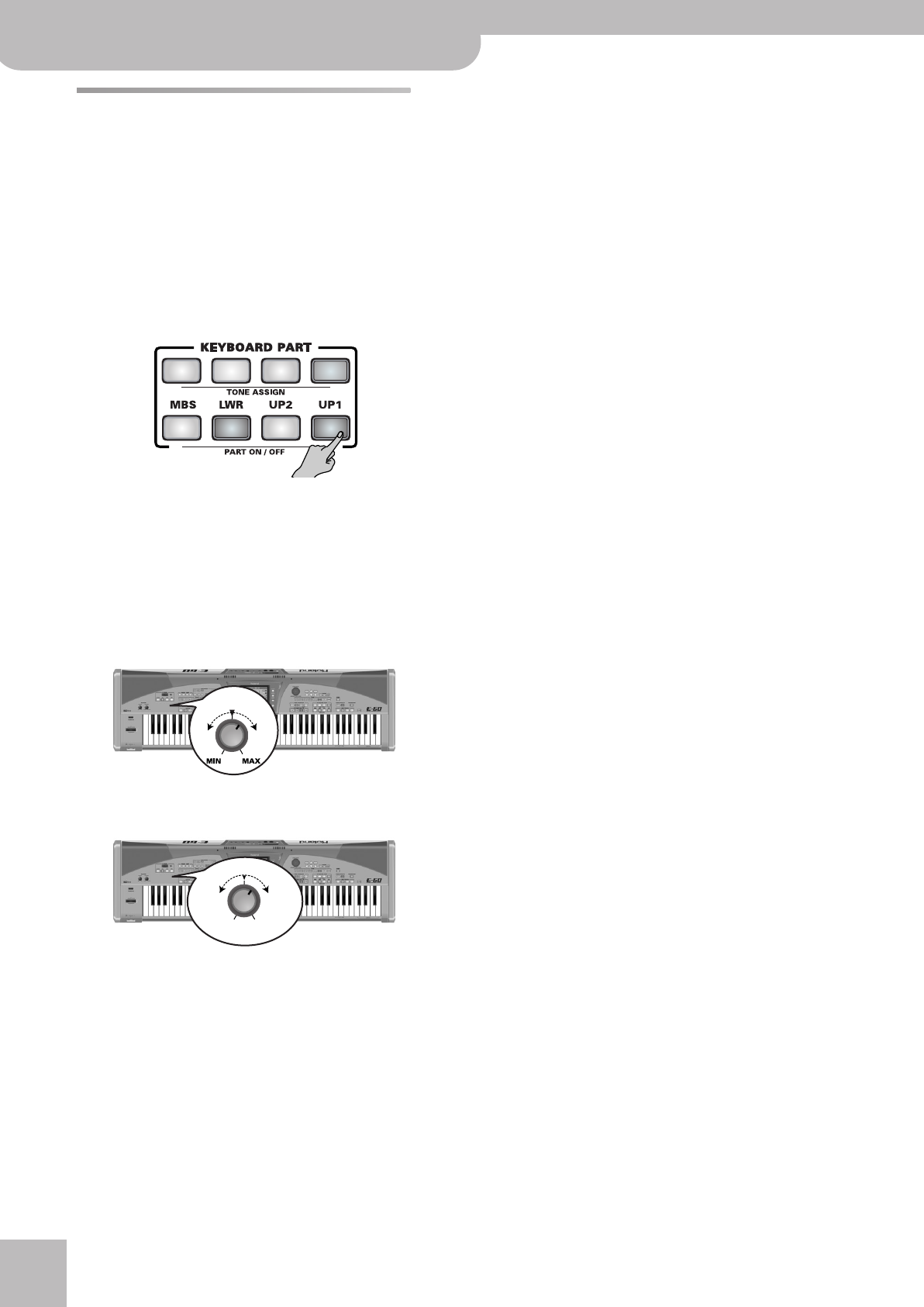
Quick Start
26
r
E-60/E-50 Music Workstation
Using the Keyboard parts
Your E-60/E-50 provides 4 “parts” that allow you to
play different sounds on the keyboard. Those parts are
called “Keyboard parts”. Let’s add a live melody to the
accompaniment.
Playing with an Upper and/or the Lower part
At power-on, the UP1 part is automatically switched on
and assigned to the entire keyboard. That is because the
E-60/E-50 starts up in EASY SETTING “PIANO” mode.
(1) Press the PART ON/OFF [UP1] button if it does not
light.
(2) Play a few notes on the keyboard.
The UP1 part’s sound is assigned to the entire key-
board.
You could also press the TONE EFFECTS [MULTI¥FX]
button to add an appropriate effect to the Keyboard
parts you are using (here UP1). See page 84 for
details.
(3) Use the MASTER [VOLUME] knob to set the E-60/
E-50’s output volume.
(4) Use the [BALANCE] knob to set the balance
between the accompaniment and your live playing.
Turn it towards “KEYBOARD” if the notes you play
yourself are too soft. Turn it towards “ACCOMP” if
your playing is too loud with respect to the Arranger
(or song).
Note: See page 81 for how to set the balance between the
Keyboard parts.
(5) Press the PART ON/OFF buttons of other Keyboard
Parts you want to add (by “layering” them).
Alternating between sounds
The E-60/E-50 allows you to play several sounds simul-
taneously using the Keyboard parts. Other parts are
played by the Arranger/Styles and are called Style parts.
And finally, there are the Song parts that are controlled
by the Recorder function.
The Keyboard parts can be used together or to quickly
alternate between sounds.
Use the PART ON/OFF buttons to select the part(s) you
want to play.
You can play several sounds simultaneously (which is
called a “layer”) or via separate keyboard zones (“split”).
Below please find an explanation of the Keyboard parts.
(See p. 60 for the Style parts.)
• UP1 (Upper1): Upper1 is normally the main solo part
(and switched on automatically in Piano mode).
• UP2: The Upper2 part can be used as additional solo
part to be layered with the Upper1 part or as an
alternative melody sound. It provides two tuning
parameters (“Coarse” and “Fine”) Upper1 does not
have.
• LWR: The Lower part can be assigned to the left half
of the keyboard.
• MBS: The MBS part supplies a semi-automatic bass
line to your left-hand notes if the LWR parts is active.
When the LWR button doesn’t light, it behaves like
any other Keyboard part.
Note: All Keyboard parts can be used to play drum sounds.
Unlike previous Roland arranger instruments, the E-60/E-50 no
longer provides a dedicated “Manual Drums” part.
• MELODY INTELL (Melody Intelligence): This part is
triggered by the Arranger and plays automatic har-
monies that are added to the melody you play using
the UP1 part. You cannot play that part yourself. That
explains why its button not part of the KEYBOARD
PART section (it is one of the two TONE EFFECTS but-
tons). You can choose from among 18 harmony types
(page 62).
MAS
VOLUME
BALANCE
ACCOMP
KEYBOARD
E-60_50_OM_UK.book Page 26 Thursday, June 22, 2006 10:06 AM


















